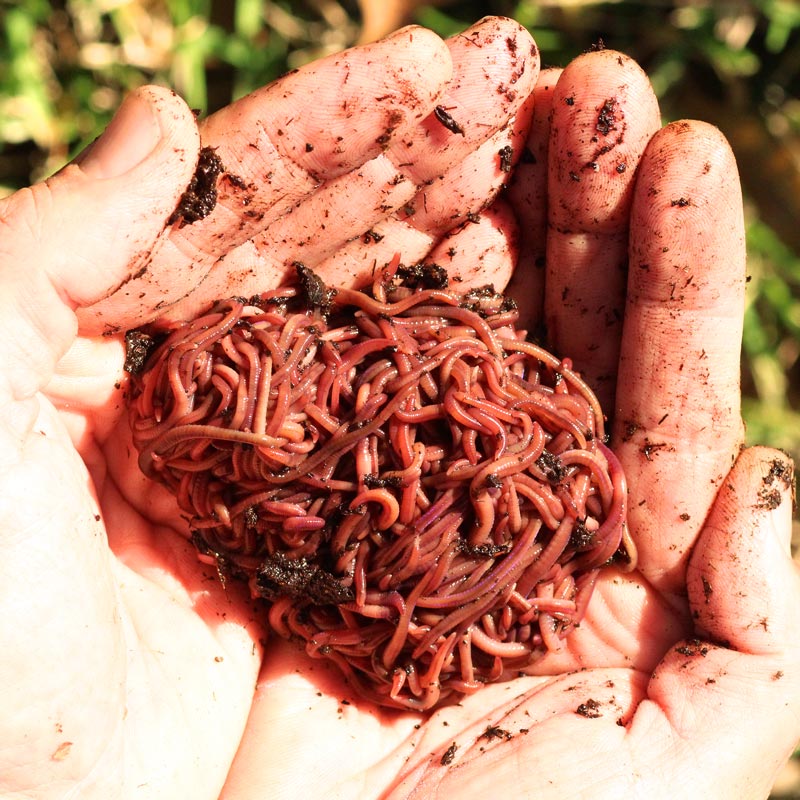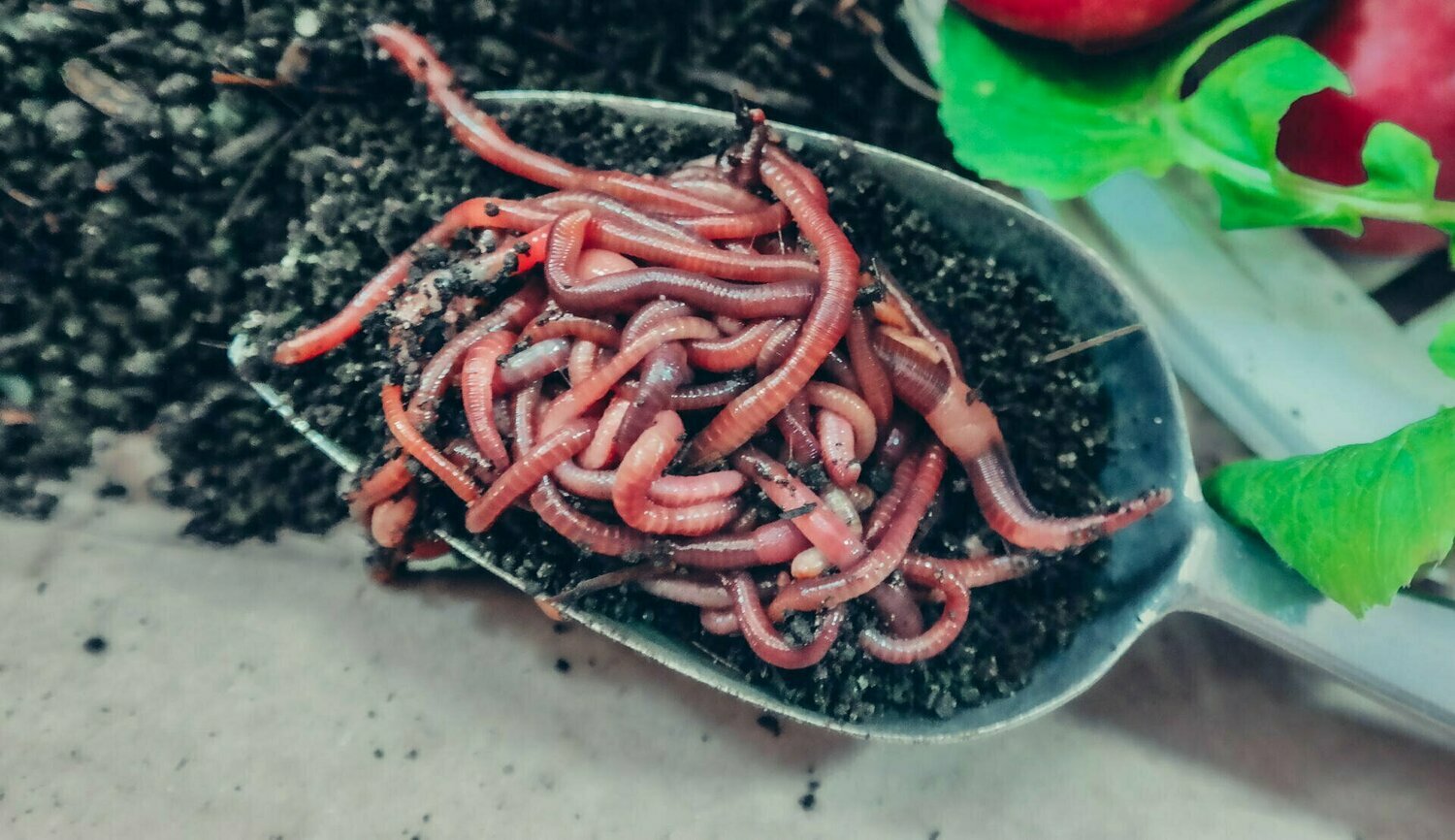Maximizing the Perks of Red Wiggler Worms: A Comprehensive Manual for Home Gardeners and Urban Farmers
In the realm of sustainable horticulture techniques, red wiggler worms stand as unsung heroes, silently transforming organic waste into nutrient-rich spreadings that can function marvels for soil health. By exploring the intricacies of just how to successfully care for and make best use of the benefits of red wiggler worms, individuals can open a wide range of opportunities for improving the sustainability and productivity of their horticulture undertakings.
Comprehending Red Wiggler Worms
Red Wiggler worms, renowned for their efficient composting capabilities, are a species of earthworms widely utilized in vermiculture techniques. These worms, clinically known as Eisenia fetida, flourish in decomposing natural material, making them suitable prospects for composting.
One key quality of Red Wiggler worms is their reproductive rate. These hermaphroditic animals possess both male and female reproductive organs, permitting them to reproduce quickly under beneficial problems. A fully grown Red Wiggler can produce numerous children in a brief duration, making sure a stable population within a composting system.

Establishing a Worm Bin
When establishing a worm bin for vermiculture objectives, correct prep work and focus to information are crucial for creating a conducive environment for Red Wiggler worms. Begin by picking an ideal container for your worm bin.

Area the worm bin in a trendy, dark location away from straight sunshine and extreme temperature levels. By following these steps, you can set up a growing worm bin that will successfully process organic waste right into nutrient-rich vermicompost for your garden.
Feeding and Keeping Worms
Making certain a nourishing and balanced diet plan is critical for the health and wellness and efficiency of Red Wiggler worms in a vermiculture system. Red Wigglers are ravenous eaters, efficient in consuming their very own body weight in natural issue daily. To maintain a flourishing worm populace, it is vital to offer them with a range of food scraps such as fruit and veggie peels, coffee premises, tea bags, and crushed eggshells. It is crucial to stay clear of feeding them citrus fruits, onions, garlic, dairy products, meat, and oily foods as these can be damaging to the worms or trigger undesirable smells in the container.
Correct wetness degrees are additionally essential for the wellness of Red Wiggler worms. By diligently checking their diet plan, moisture, and ecological conditions, home garden enthusiasts and urban farmers can maintain a healthy and effective Red Wiggler worm population dig this for composting purposes.
Collecting Worm Castings
To successfully draw out nutrient-rich worm castings from the vermicompost, an organized harvesting process is important for taking full advantage of the composting advantages. Red Wiggler Worms. The primary step in gathering worm spreadings is to encourage the worms to move away of the bin. This can be attained by placing fresh food scraps on one side and leaving the various other side uninterrupted for a few days. As soon as most of worms have dodged with fresh food, the castings can be accumulated from the opposite side.
After the castings have been collected, it is essential to separate any type of staying worms from the castings to stay clear of damaging them during storage or application. One efficient technique is to develop conical heaps of castings under intense light. Worms will instinctively move far from the light, permitting very easy splitting up and elimination.
Lastly, the harvested worm castings ought to be kept in an awesome, dark, and dry why not try this out place to preserve their high quality and efficiency as a nutrient-rich dirt change. By following these actions, home garden enthusiasts and city farmers can take full advantage of the advantages of red wiggler worms in their vermicomposting systems.
Using Worm Castings in Gardening
The consolidation of nutrient-rich worm castings into garden dirt can significantly enhance plant growth and total dirt wellness. Worm spreadings, likewise understood as vermicast, are a natural fertilizer produced by red wiggler worms as they break down natural issue. These spreadings are rich in important nutrients like nitrogen, phosphorus, potassium, and useful microorganisms that promote plant development and enhance soil structure.
When utilizing worm spreadings in horticulture, it is vital to mix them thoroughly right into the soil or use them as a leading clothing around plants. The slow-release nature of worm castings ensures a steady supply of nutrients to plants gradually, decreasing the risk of nutrient leaching and advertising lasting soil fertility. Additionally, worm spreadings aid enhance soil oygenation, water retention, and microbial activity, creating a healthy and balanced atmosphere for plant roots to prosper.

Verdict
In conclusion, the usage of red wiggler worms in home horticulture and city farming can significantly benefit dirt wellness and plant growth. By understanding exactly how to establish up and keep a worm container, feed the worms properly, and gather their nutrient-rich castings, gardeners can make best use of the benefits of these earthworms. Incorporating worm castings into gardening methods can improve dirt fertility and total plant performance. Overall, red wiggler worms provide a efficient and sustainable option for enhancing yard and farm yields.
In the world of lasting gardening practices, red wiggler worms stand as unsung heroes, silently changing organic waste into nutrient-rich castings that can function marvels for soil health.When developing a worm container for vermiculture functions, appropriate preparation and focus to information are vital for creating a helpful environment for Red Wiggler worms. The very first action in gathering worm castings is to urge the worms to Learn More Here migrate to one side of the container. Worm spreadings, additionally known as vermicast, are an all-natural plant food generated by red wiggler worms as they damage down natural matter. By recognizing exactly how to set up and keep a worm container, feed the worms correctly, and harvest their nutrient-rich spreadings, gardeners can make the most of the advantages of these earthworms.